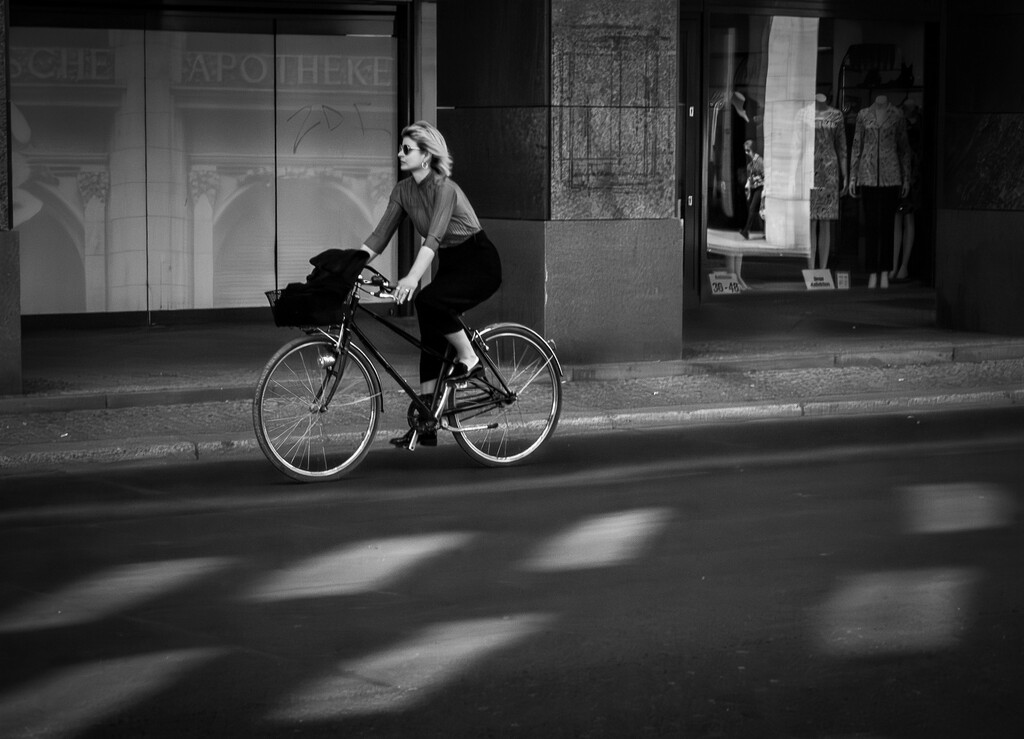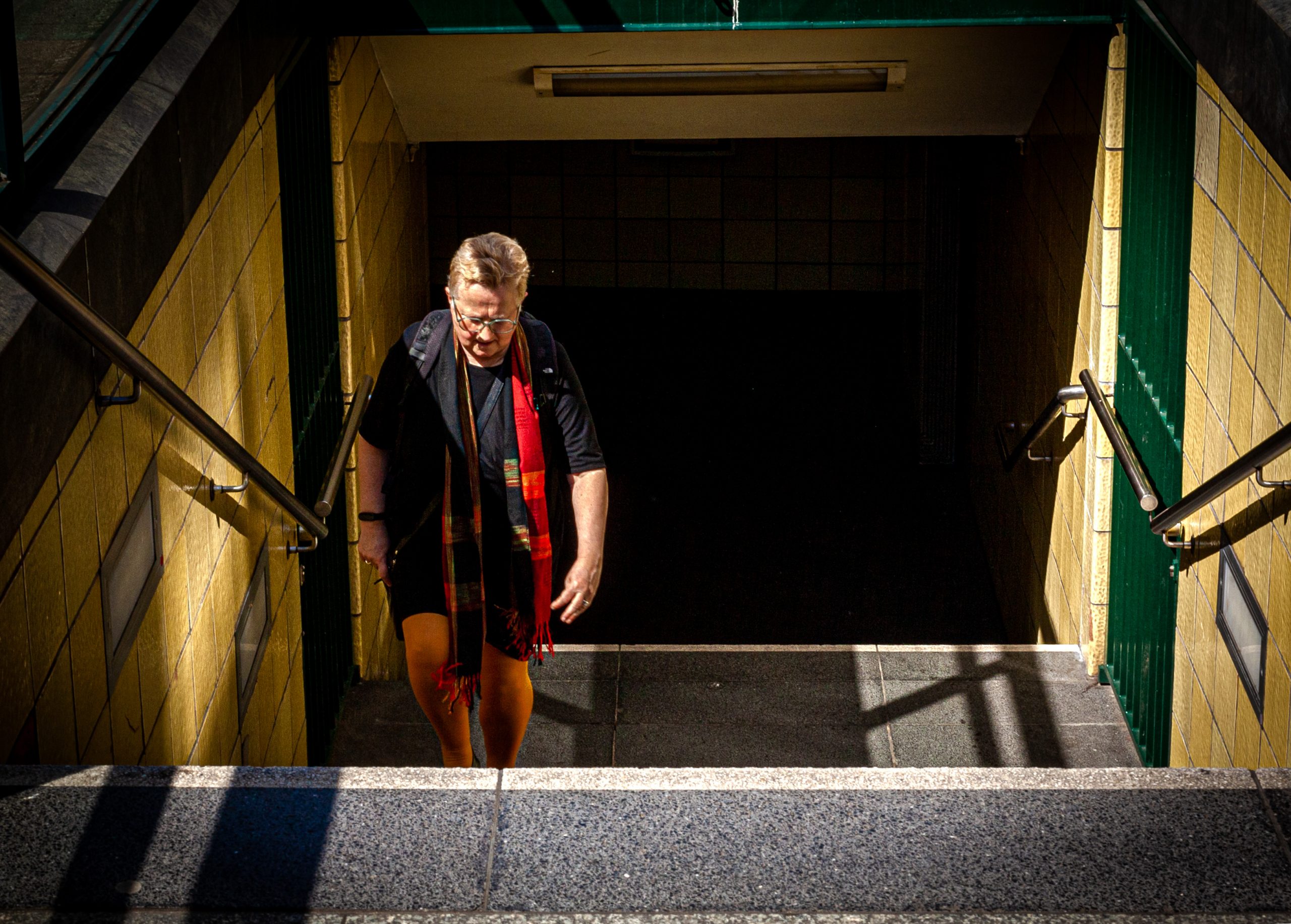Street Photography Secrets that I know
Observation along the street wakes up the mind. Street photography is not just about pointing a camera at interesting objects, it’s about capturing the moment. In order to do that, we need to have a mind set that is full of intention and desire.
Street photography is full of moments where we see a doorway to the secret of our world. A world of reflections.
Practise makes perfect – especially in photography. I think many new photographers go straight into street photography because it allows them to immediately practise on many different levels. It’s challenging, and it’s fun.
The fun of it should never be forgotten. We can be happy determined people when we walk city streets with camera in hand, and observe the urban chaos.
It’s a good day when you step out into the street with a strong intention – you know what you’re looking for – and you’re also just generally ‘feeling it’. That’s when street photography is fun, and exciting. It also means you’ll be off into your own world, for quite some time.

I’m definitely “a worker never blames his tools”, person. I’m also a person who knows that lazy thinking, a glum attitude and allowing a TV series to beckon me back home, is a bad thing; follow those thoughts once, then twice, and the third time round it’s got you for good. It becomes a habitual and fateful thought process to believe that “it’s happening for me, or it’s not happening for me”.
When you’re out on the street, camera at the ready, and you coax your mind into a nice smooth thought process of street photography, then you are always working at the precipice of a great shot – it could happen at any moment. The tipping point is in your mind – not among the people you are looking at.
So much is going on in a city. Just sit down on a kerb stone, a bench, and watch the world pass you by, you’ll start to see the world in terms of frames, moments, flows of people and objects moving, navigating, and bumping into each other; right there, among all of that is your best shot.
Wide streets and tight corners along narrow ways. I, like others, sometimes have problems with finding my mojo when I’m on the street. Yesterday, I was out and about taking shots. After a while, I realised that it’s just not working for me. I had to admit that although the shots so far were okay, I wasn’t feeling it fully, so the street shots I was taking were a little like ‘depictions’ of what’s in front of me.

I made a quick decision which I thought would at least change my mind set. I told myself that if it’s so hard right now, I’ll allow myself to get into a “bestseller” mind set; take generic street photos. You know, the ones that look like everybody else’s photos, but are fun to look at for a minute or two.
The shot below, Black & White, was the first attempt at changing my way of looking. I had been wandering through parks, wide open streets, and looking at groups of sun worshippers from a distance – all with a 50 mm lens. That’s an up close lens.
My street shots were all either too small and bitty, or looked like 17th century paintings of people dotted around a park on a sunny day – not bad in itself, but not exactly punchy stuff.
I then dipped down a side street and headed into the thick of it. Crowds shifting, groups of strangers forming flocks, dispersing and attaching themselves to other passing strands of people.
I’m not a big fan of marketplaces full of drifting people, so even a crowded street winds me up like a clock – I became as taut as a steel coil.
It’s definitely a monochrome shot – there was plenty of colour, but the tightly packed street of people and cars, smooth, dazzling reflections and those beautiful Berlin city structures as a backdrop, demanded a Black and White finish.

Words have no place in imagery. Not when you want to take street photos successfully. You should think with your eyes and feet. Find a spot to hang out in, shuffle back and forth to get a nice close distance to the action, and take a few well felt shots. Street photography is about the moment, the intention that pushes into that moment, and the constant practice of being on the street.
Being on the street with your camera exposes you to the constant ebb and flow of life. Humans need to make sense of their environment. We do this for security and knowledge; to know that we are safe. Our brain is eliminating, checking things, distorting and deleting information – sometimes things pass us by that should have been so obvious.
We see what we want to see. So, it figures how important a strong intention is for a street photographer; we are looking for something that is specific to our feelings and thoughts on that particular day. Intentions about types of life on the street.
I have often spent hours doing street photography, then felt like a break. So I cap my camera lens, put it into my shoulder bag for a moment so I have free hands to drink a coffee. It’s at that moment that something happens.

A perfect moment, a combination of events quickly go into a spiked crescendo and culminate into a small but significant moment of life on the street.
And I was drinking coffee, and my camera was in my bag. I don’t drink coffee on the go, anymore.

Cars and buses, dogs and people. All pushing and shoving their way through the streets. Glorious stuff for a street photographer.
I tend to let cars and buses go – I want them to pass so I can clearly see what I’m looking for. structures and people. Yesterday though, I realised that in those generic bestseller street photography shots, cars play an important role.
The powerful reflections that bounce of the bonnet/hood of a shiny car are perfect moments of light and darkness that create part of a frame.
The frame makes a photo worth looking at, the composition is of primary importance – without a good composition on the whole, you can’t find a part of the shot that you intend on being a “frame”.
Many street photographers talk about the frame, and never the composition.
They might not fully understand that the frame is the centre of your shot, the important bit – not in the middle – but the point within a composition where the viewer’s eye will always return to. The composition is the whole. The complete composition should be eye catching, and offer an interesting path for the eye to follow until it reaches a point of high interest in the whole photo.
A good composition will allow the viewer to enjoy the photo for longer than the bestseller-two-minute shot. It’ll be a street photo that draws the viewer into the composition and leads them around all the elements until it naturally fall upon the framed intention of the street photographer.
Just do the above, and you’ll be knocking out masterpieces in no time. Ho, ho!

There is nothing wrong with attempting to imitate other street photographers – that’s how you get behind their secrets. Emulate, imitate, steal – but don’t slavishly copy everything they do. That only leads to nothing learned, and a numb-skull attitude of banging out a few shots, automatically processing them and posting them for “likes”.
Build your confidence by taking a risk, and taking shots of street scenes that make your heart leap. You will find them if you go out with intentions to find something special.
When you do this you’ll end up with some pretty exciting photos in your camera.

What People Do When They are in Public Places
I like to study people in action. The things they do when alone in public, how they act when they meet a person, their gait, their way of using the hands and facial gestures. All of these make up the expression of humans in public places.
The more you study people, the more you know what is reasonable to expect. This helps you to watch out for these gestures, and sometimes it helps you anticipate an action; people meet on the street, embrace each other, laugh, joke, pull faces to express positive and negative ideas. All this and more helps a street photographer to get down into the secret world of observing what’s really happening out there.





